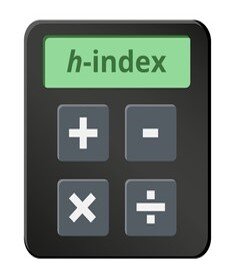How to calculate h-index manually?


In this article, we will walk you through the process of calculating the h-index manually. We will cover topics such as understanding the h-index, gathering publication and citation data, arranging the data in descending order, and determining the h-index value. By the end of this article, you will know exactly how to calculate your h-index manually.

Jorge E. Hirsch, a physicist, developed the h-index metric in 2005 to assess an individual scientist's research contribution. It considers the number of publications and the amount of citations each article has obtained. The h-index is a quantitative metric that combines productivity and citation impact, providing a more comprehensive view of a researcher's impact than just counting publications or total citations.

To calculate the h-index manually, you must gather information about your publications and their corresponding citation counts. Start by creating a comprehensive list of all your publications, including journal articles, conference papers, book chapters, and other scholarly outputs. Next, ascertain the number of citations each article has obtained. These statistics are available through databases like Google Scholar, Scopus, and Web of Science. Make sure to record the citation counts accurately for each publication.

Once you have collected the publication and citation data, arrange them in descending order based on the number of citations. It means that the publication with the highest number of citations should be at the top of the list, followed by the publication with the second-highest number of citations, and so on. This step allows you to determine the ranking of your publications based on their citation impact.

To calculate the h-index manually, you need to identify the point where the number of citations matches the rank of the publication. Starting from the top of the list, count down the number of publications until you reach a point where the number of citations is equal to or less than the rank of the publication. The highest value at which this criterion is met is the h-index. For example, if the fifth publication on your list has five or fewer citations, your h-index would be four.

While the h-index provides a valuable measure of research impact, it has some limitations. The h-index does not consider the quality or significance of the individual publications, nor does it consider variations in citation practices across disciplines. Additionally, the h-index may be influenced by self-citations or collaboration patterns. Therefore, it is crucial to interpret the h-index in conjunction with other metrics and qualitative assessments of your work.

To sum up, manually calculating the h-index entails obtaining publication and citation data, sorting them in descending order, and then calculating the h-index based on the citation-rank relationship. While the manual calculation method provides a basic understanding of the h-index, automated tools, and databases can simplify the process and provide more accurate results. Remember that the h-index is just one of many metrics available to evaluate research impact, and it should be considered alongside other indicators and qualitative assessments of your work.
SITA Academy
SITA Academy is a leading provider of comprehensive scholarly support services for researchers and scholars. At SITA Academy, we understand the importance of navigating the complex journal publication process with ease and efficiency. Our team of experts is dedicated to assisting scholars in all stages of the publication journey, from journal article selection to final publication. With our range of specialized services, we ensure that your research receives the attention it deserves.
Our services include
Native English editing: Our skilled editors provide professional editing services to enhance the clarity, coherence, and overall quality of your manuscript. We ensure that your work adheres to the highest linguistic standards, enabling your research to effectively communicate its message.
Formatting: Our formatting services ensure that your manuscript meets the specific requirements of your target journal. We meticulously format your document, including citations, references, headings, and overall layout, to adhere to journal guidelines and enhance its visual appeal.
Plagiarism Checking: We employ advanced plagiarism detection tools to check your manuscript for possible instances of unintentional plagiarism. Our plagiarism-checking service ensures the originality and integrity of your work, giving you confidence in the authenticity of your research.
Article Extraction from Thesis: If you have completed a thesis or dissertation and wish to extract specific portions for journal publication, our experts can assist you. We carefully extract and rework relevant sections from your thesis, ensuring that they meet the requirements and standards of journal articles.
With SITA Academy's comprehensive range of services, we strive to simplify and streamline the publication process for scholars, enabling them to focus on their research while we take care of the technical and language-related aspects. Our commitment to excellence ensures that your work stands out in the competitive world of academic publishing.
If you have any questions, inquiries, or would like to learn more about our services, please don't hesitate to reach out to us. Our dedicated team is ready to assist you.